Salar Jafarlou
ECG Unveiled: Analysis of Client Re-identification Risks in Real-World ECG Datasets
Aug 02, 2024



Abstract:While ECG data is crucial for diagnosing and monitoring heart conditions, it also contains unique biometric information that poses significant privacy risks. Existing ECG re-identification studies rely on exhaustive analysis of numerous deep learning features, confining to ad-hoc explainability towards clinicians decision making. In this work, we delve into explainability of ECG re-identification risks using transparent machine learning models. We use SHapley Additive exPlanations (SHAP) analysis to identify and explain the key features contributing to re-identification risks. We conduct an empirical analysis of identity re-identification risks using ECG data from five diverse real-world datasets, encompassing 223 participants. By employing transparent machine learning models, we reveal the diversity among different ECG features in contributing towards re-identification of individuals with an accuracy of 0.76 for gender, 0.67 for age group, and 0.82 for participant ID re-identification. Our approach provides valuable insights for clinical experts and guides the development of effective privacy-preserving mechanisms. Further, our findings emphasize the necessity for robust privacy measures in real-world health applications and offer detailed, actionable insights for enhancing data anonymization techniques.
Enhancing Performance and User Engagement in Everyday Stress Monitoring: A Context-Aware Active Reinforcement Learning Approach
Jul 11, 2024



Abstract:In today's fast-paced world, accurately monitoring stress levels is crucial. Sensor-based stress monitoring systems often need large datasets for training effective models. However, individual-specific models are necessary for personalized and interactive scenarios. Traditional methods like Ecological Momentary Assessments (EMAs) assess stress but struggle with efficient data collection without burdening users. The challenge is to timely send EMAs, especially during stress, balancing monitoring efficiency and user convenience. This paper introduces a novel context-aware active reinforcement learning (RL) algorithm for enhanced stress detection using Photoplethysmography (PPG) data from smartwatches and contextual data from smartphones. Our approach dynamically selects optimal times for deploying EMAs, utilizing the user's immediate context to maximize label accuracy and minimize intrusiveness. Initially, the study was executed in an offline environment to refine the label collection process, aiming to increase accuracy while reducing user burden. Later, we integrated a real-time label collection mechanism, transitioning to an online methodology. This shift resulted in an 11% improvement in stress detection efficiency. Incorporating contextual data improved model accuracy by 4%. Personalization studies indicated a 10% enhancement in AUC-ROC scores, demonstrating better stress level differentiation. This research marks a significant move towards personalized, context-driven real-time stress monitoring methods.
Objective Prediction of Tomorrow's Affect Using Multi-Modal Physiological Data and Personal Chronicles: A Study of Monitoring College Student Well-being in 2020
Jan 26, 2022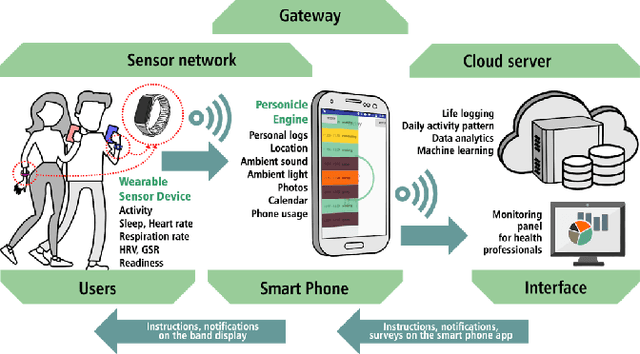
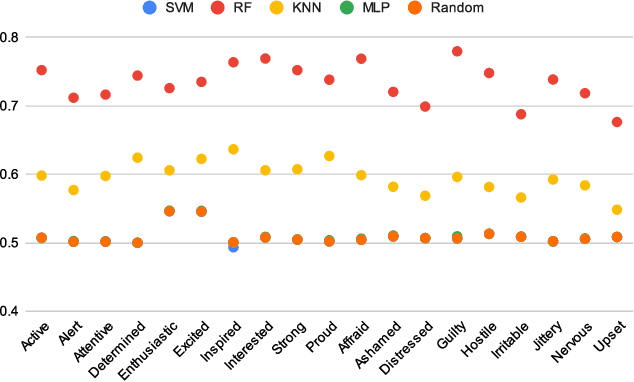
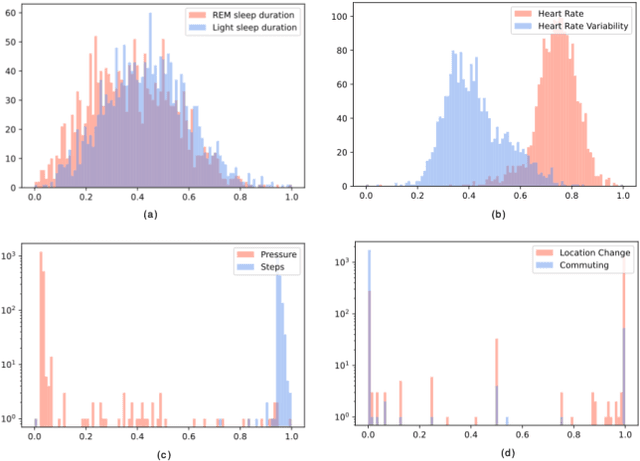
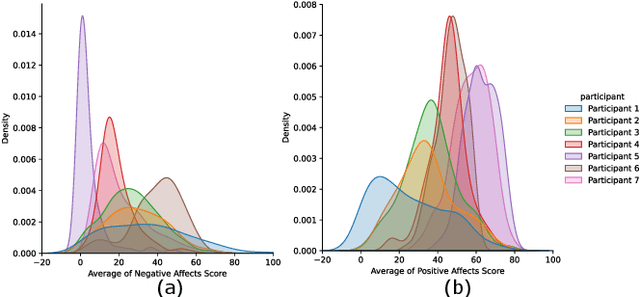
Abstract:Monitoring and understanding affective states are important aspects of healthy functioning and treatment of mood-based disorders. Recent advancements of ubiquitous wearable technologies have increased the reliability of such tools in detecting and accurately estimating mental states (e.g., mood, stress, etc.), offering comprehensive and continuous monitoring of individuals over time. Previous attempts to model an individual's mental state were limited to subjective approaches or the inclusion of only a few modalities (i.e., phone, watch). Thus, the goal of our study was to investigate the capacity to more accurately predict affect through a fully automatic and objective approach using multiple commercial devices. Longitudinal physiological data and daily assessments of emotions were collected from a sample of college students using smart wearables and phones for over a year. Results showed that our model was able to predict next-day affect with accuracy comparable to state of the art methods.
Personal Mental Health Navigator: Harnessing the Power of Data, Personal Models, and Health Cybernetics to Promote Psychological Well-being
Dec 15, 2020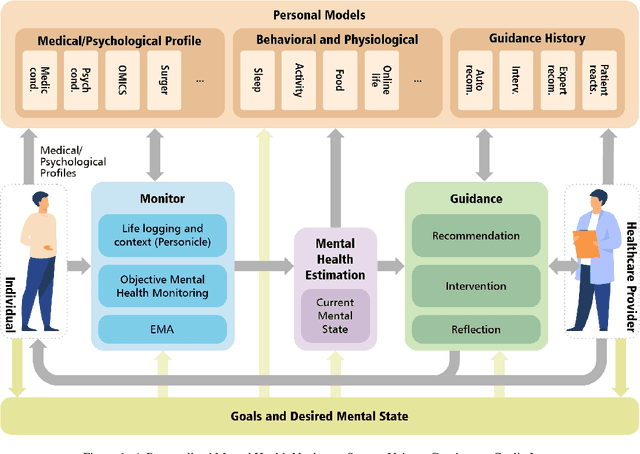
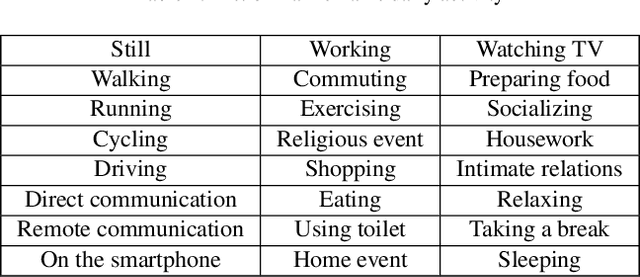
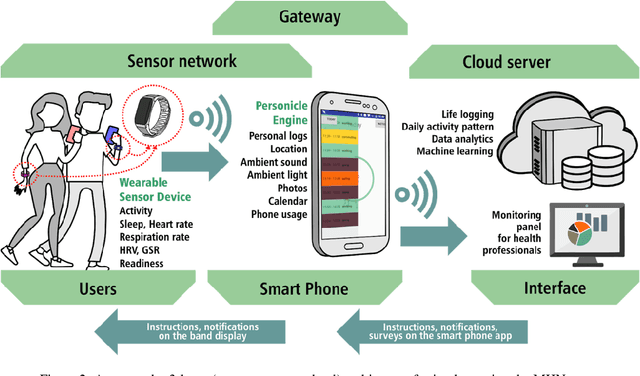
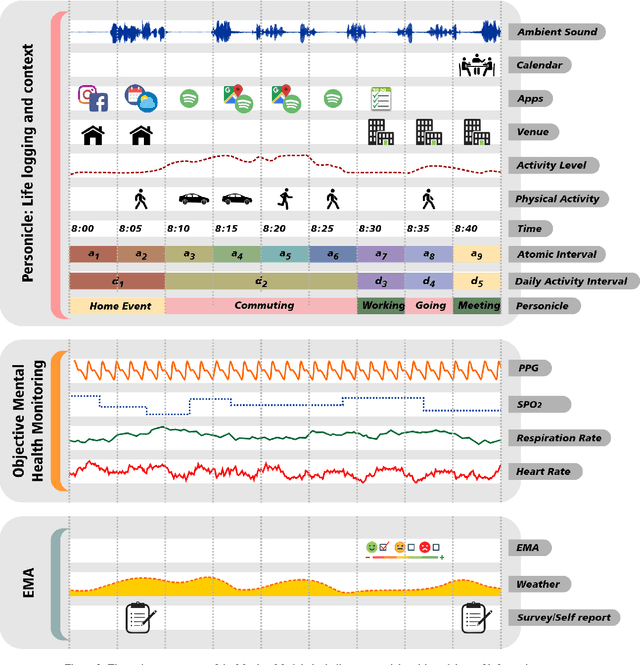
Abstract:Traditionally, the regime of mental healthcare has followed an episodic psychotherapy model wherein patients seek care from a provider through a prescribed treatment plan developed over multiple provider visits. Recent advances in wearable and mobile technology have generated increased interest in digital mental healthcare that enables individuals to address episodic mental health symptoms. However, these efforts are typically reactive and symptom-focused and do not provide comprehensive, wrap-around, customized treatments that capture an individual's holistic mental health model as it unfolds over time. Recognizing that each individual is unique, we present the notion of Personalized Mental Health Navigation (MHN): a therapist-in-the-loop, cybernetic goal-based system that deploys a continuous cyclic loop of measurement, estimation, guidance, to steer the individual's mental health state towards a healthy zone. We outline the major components of MHN that is premised on the development of an individual's personal mental health state, holistically represented by a high-dimensional cover of multiple knowledge layers such as emotion, biological patterns, sociology, behavior, and cognition. We demonstrate the feasibility of the personalized MHN approach via a 12-month pilot case study for holistic stress management in college students and highlight an instance of a therapist-in-the-loop intervention using MHN for monitoring, estimating, and proactively addressing moderately severe depression over a sustained period of time. We believe MHN paves the way to transform mental healthcare from the current passive, episodic, reactive process (where individuals seek help to address symptoms that have already manifested) to a continuous and navigational paradigm that leverages a personalized model of the individual, promising to deliver timely interventions to individuals in a holistic manner.
Analyzing Large Receptive Field Convolutional Networks for Distant Speech Recognition
Oct 15, 2019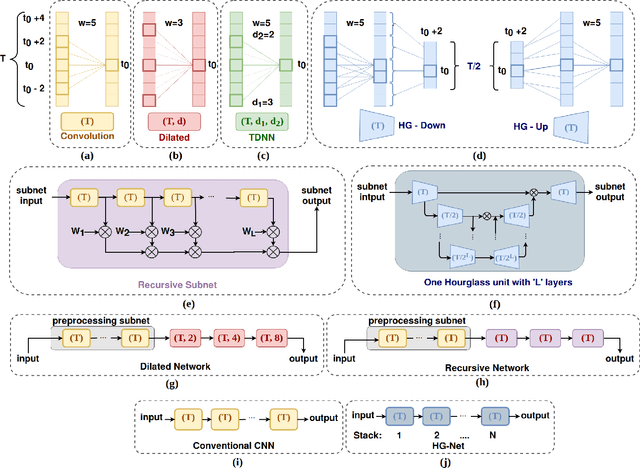
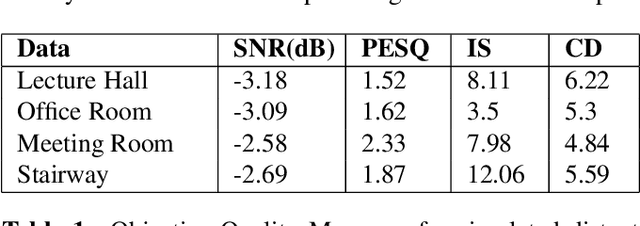
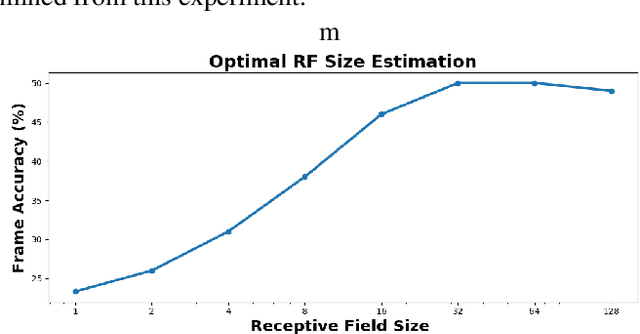
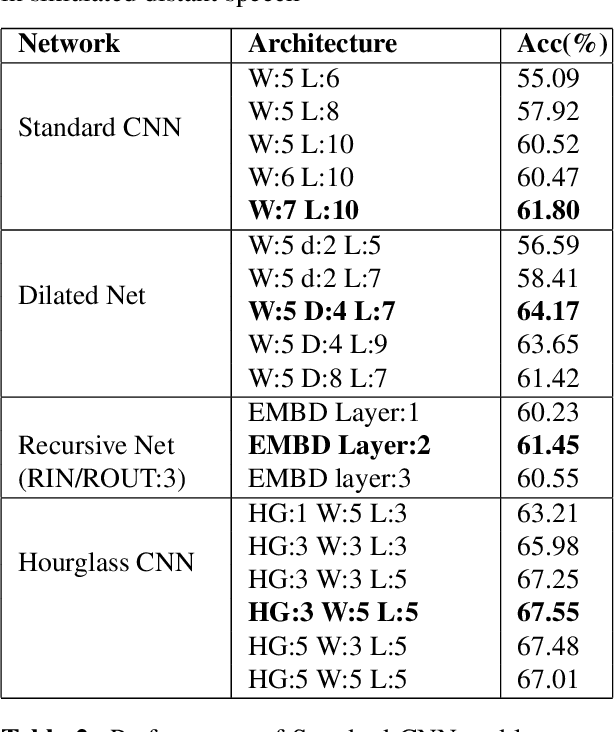
Abstract:Despite significant efforts over the last few years to build a robust automatic speech recognition (ASR) system for different acoustic settings, the performance of the current state-of-the-art technologies significantly degrades in noisy reverberant environments. Convolutional Neural Networks (CNNs) have been successfully used to achieve substantial improvements in many speech processing applications including distant speech recognition (DSR). However, standard CNN architectures were not efficient in capturing long-term speech dynamics, which are essential in the design of a robust DSR system. In the present study, we address this issue by investigating variants of large receptive field CNNs (LRF-CNNs) which include deeply recursive networks, dilated convolutional neural networks, and stacked hourglass networks. To compare the efficacy of the aforementioned architectures with the standard CNN for Wall Street Journal (WSJ) corpus, we use a hybrid DNN-HMM based speech recognition system. We extend the study to evaluate the system performances for distant speech simulated using realistic room impulse responses (RIRs). Our experiments show that with fixed number of parameters across all architectures, the large receptive field networks show consistent improvements over the standard CNNs for distant speech. Amongst the explored LRF-CNNs, stacked hourglass network has shown improvements with a 8.9% relative reduction in word error rate (WER) and 10.7% relative improvement in frame accuracy compared to the standard CNNs for distant simulated speech signals.
 Add to Chrome
Add to Chrome Add to Firefox
Add to Firefox Add to Edge
Add to Edge